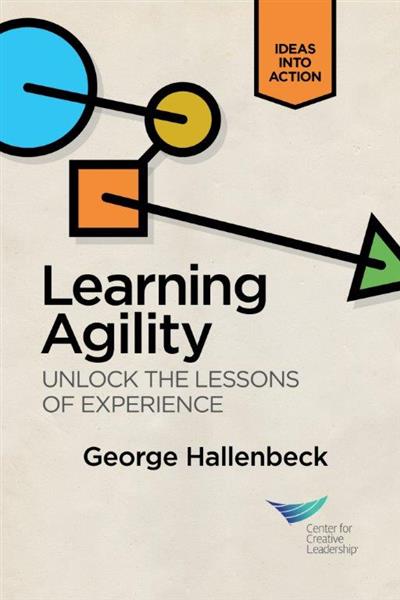How to Increase Your Learning Agility: 4 Tips
In times of change, leaders need to be more agile than ever. Adapting to new business strategies, working across cultures, dealing with virtual teams, and taking on new assignments all demand that leaders be flexible and agile.
The willingness and ability to continue learning throughout your career is more important now than ever, as the workplace has been upended, business models are changing, and technology and industries shift.
What do you do when you don’t know what to do?
To be a high-performer and increase your long-term potential, you need a way to deal with the unknown — and fast.

The ability to learn from experience is also a critical predictor of success as a leader, according to decades of our research. (Learn more about how to gauge if you’re an agile learner likely to have a long career.)
Learning agility is about knowing how to learn — knowing what to do when you don’t know what to do. It’s about learning from experience and applying it in new ways, adapting to new circumstances and opportunities.
It’s never too soon (or too late) to increase your learning agility.
So, if you want to increase your performance — and your long-term potential — you can boost your learning agility in several ways.
A Step-by-Step Guide to Build Learning Agility
Follow These 4 Tips for Improving Your Learning Agility
With improved learning agility, you’re able to make the most out of your experiences. As you build the habits that help you figure things out as you go, you’ll improve how you navigate new and difficult situations and increase your contribution to your organization.
To excel at learning from experience and to succeed in changing times, follow our 4 tips for learning agility:
1. Be a Seeker.
Seek out new and diverse experiences. Memorable experiences impact the way in which you lead and manage, so seek out more and different experiences. Immerse yourself in situations that broaden your skills and perspective. Explore new pathways.
- Embrace the challenge of the unfamiliar; don’t just go through the motions. If you react to the new learning opportunity by staying close to your comfort zone, you minimize struggle and discomfort — and you also miss out on the corresponding rebound in growth and performance. The end result is that you’re pretty much the way you were before, and the full power of the new experience is lost.
- Take on a new challenge that scares you. Find something that is meaningful, but not so important that failure will have serious personal consequences. Most importantly, tell others what you’re doing, and ask for their help and support. Taking on new challenges allows you to develop new skills and perspectives that may become an important part of your repertoire in the future.
- Don’t get stuck on first solutions. We often choose the first solution to come to mind, rather than taking time to consider whether it’s truly the optimal course over the long term. By trying out new approaches, you can uncover ways of doing things that could save time and energy and surface new learning that may otherwise haven’t been considered. Look beyond the obvious or the easy. Bring in other points of view. Find another way to understand the problem. Approach it from a different angle. If you’re typically data-driven, seek out stories or go get some hands-on, action-driven insight. For each problem you face, challenge yourself to come up with new solutions, even if seemingly tried and trusted ones exist.
- Make it a habit to push for new ideas — the less traditional, the better. When faced with a challenge, ask yourself 2 questions: What’s holding me back from trying something new and different? If these constraints weren’t in place, how would I approach this situation differently?
2. Hone Your Sense-Making.
In today’s high-stakes, complex, ambiguous, and fast-moving situations, you don’t have the luxury of time. You need to dive in and start making things happen. This means you need to take an active approach to making sense of the new challenges you face. Be curious and willing to experiment. Ask “Why?” “How? and “Why not?”
- Really actively listen to understand what others are saying, and trust that you’ll have a response when they’ve finished talking.
- When you find yourself feeling stressed, pause. Don’t just say or do the first thing that comes to your head — when facing leadership stress, take a moment to consider what’s really required.
- Find another way to understand a problem. Utilize multiple techniques, engage different senses, and tap into your emotions to wrest understanding, insight, and meaning from the experience. Elevated sense-making is an essential skill to develop for high-potential leaders.
3. Internalize Experiences and Lessons Learned.
This process is needed to solidify insights and lessons learned for recall and application later. If you don’t process the learning, you may miss important clues to next steps. Lean on others for this if you need to. Learning-agile people recognize that others are essential to their learning and performance. They build ties and relationships that increase their access to people who can provide new experiences and opportunities to learn; they can collaborate across boundaries.
- Ask for feedback and be open to criticism. Find someone who you trust to give you open and honest feedback. Show that you’re open to the process by only asking clarifying questions. Take time to think about what happened and what you’re learning. View feedback as a gift that someone’s giving you. You may not like it, and it may be uncomfortable, but there’s value in it nonetheless. Regardless of the other party’s motivations for giving you feedback, there’s always the opportunity to learn something about yourself.
- Don’t defend. Resist the temptation to explain your actions or make excuses. When you enter a mode of self-preservation and try to defend what is, you close yourself off to what could be. To practice non-defensiveness, always try to thank the other person. Consider the feedback carefully so you can see patterns (and changes) over time.
- Reflect, both alone and with others. Learning occurs when you take the time to reflect, to shift your thinking beyond merely what happened to ask why things happened the way they did. Reflection helps to surface the intuitive and lock it in for future reference. So step back from the busyness and figure out what you’re learning from a project, from an interaction, from a new experience. Talk about what’s currently working well and what isn’t — or debrief what’s already happened. Conduct after-action reviews where you, and relevant others, reflect by asking questions: What happened? Why did it happen that way? What should we stop/start/continue doing in order to ensure success in the future? What changes in knowledge, skill level, attitudes, behavior, or values resulted from the experience?
4. Adapt and Apply.
Through your experiences, you’ve had the opportunity for development and learning things. Over time, you get even better at applying those learnings to navigate new and challenging situations.
- Learn to rely on your intuition. Concentrate on principles and rules of thumb. People who rate high on learning agility tell us they operate largely on feel and flexibility. When faced with something new, look for similarities between the situation and things you’ve done in the past. Draw on these similarities to frame the new challenges.
- Don’t overthink. Under pressure, you probably feel the urge to get things done quickly. Ironically, consciously searching your mind for ideas and solutions closes us off to both the wisdom of others and our own experience. Inspiration often comes from the unconscious; being open to this can spark new ideas and strengthen performance. Be a flexible leader and don’t shy away from experimentation as you venture into new territory.
Our research has found that learning-agile superstars engage in these 4 behaviors at a significantly higher level of skill and commitment than everyone else — and get great results over and over again. (That’s why it’s often said that great leaders are great learners.)
Ultimately, your ability to continuously learn and adapt will determine the extent to which you thrive in today’s turbulent times — and succeed in the future.
If you follow our tips to improve your learning agility, you’ll make the most of your experiences. By seeking, sense-making, internalizing, and applying, you’ll do more, learn more, and have a more satisfying career.
Ready to Take the Next Step?
Share these tips for improving your learning agility with other leaders at your organization, and upskill your team with a customized learning journey for your leaders using our research-backed modules. Available leadership topics include Communication, Emotional Intelligence, Learning Agility, Listening to Understand, Psychological Safety, and more.







